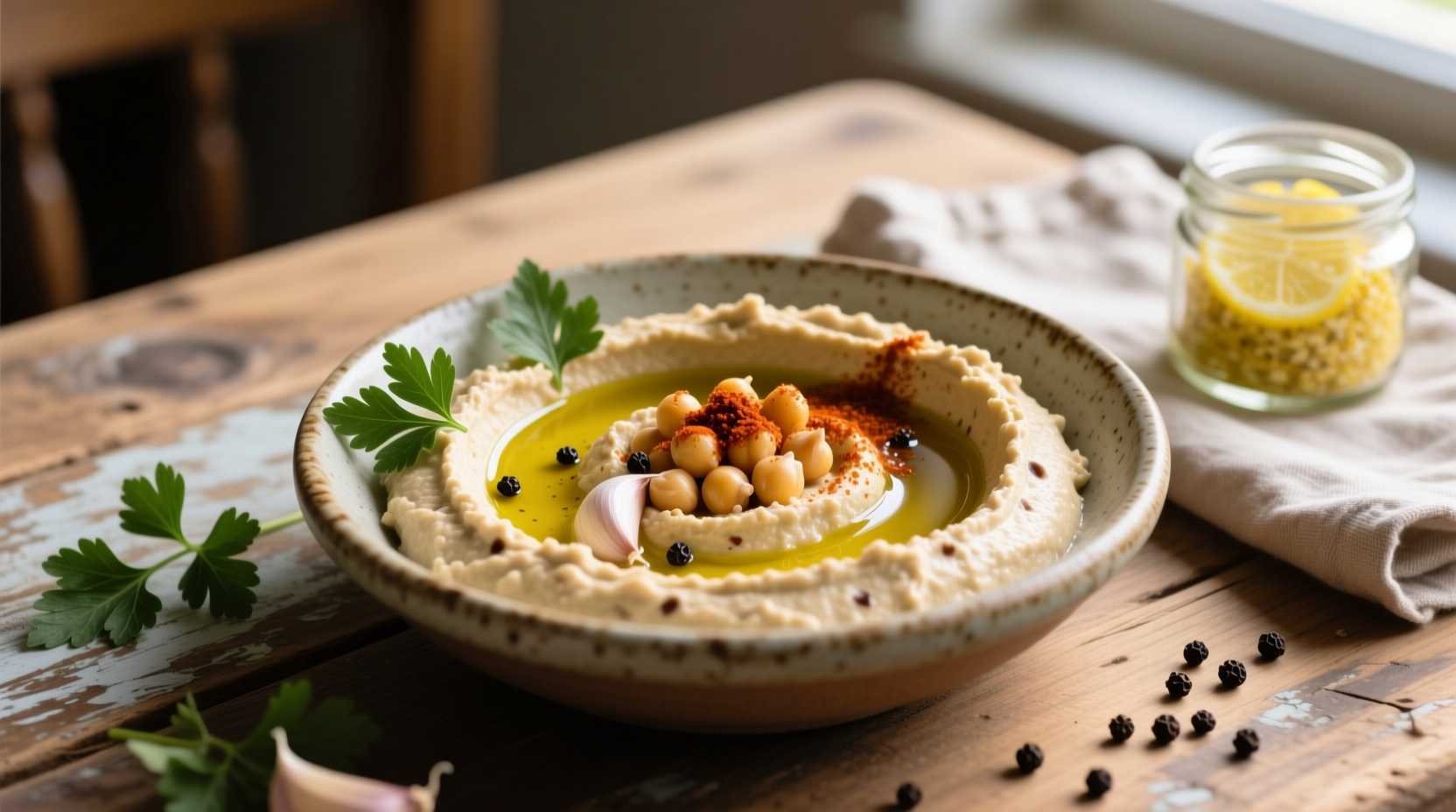For centuries, hummus has been a staple across the Levant region, with variations appearing in Egyptian, Lebanese, and Palestinian culinary traditions. While tahini (sesame paste) is commonly associated with modern hummus, historical evidence shows that tahini-free versions existed long before sesame became widely available in some regions. According to The Oxford Companion to Food, early hummus recipes documented in 13th century Egypt relied solely on chickpeas, garlic, and olive oil—proving that delicious tahini-free hummus isn't just a modern workaround, but part of the dish's authentic heritage.
The Science Behind Perfect Tahini-Free Hummus
Traditional hummus relies on tahini for its creamy texture and nutty flavor. When eliminating tahini, two critical elements must be addressed: texture and flavor complexity. Food science research published in the Journal of Texture Studies confirms that the key to creamy texture without tahini lies in proper chickpea preparation and emulsification technique.
| Traditional Hummus | Tahini-Free Hummus | Key Difference |
|---|---|---|
| Requires tahini (sesame paste) | No tahini needed | Accessibility for sesame allergies |
| Nutty flavor profile | More pronounced chickpea flavor | Requires garlic and lemon balance |
| Naturally creamy texture | Requires technique for creaminess | Ice water emulsification is critical |
Why This Recipe Works When Others Fail
Most tahini-free hummus recipes result in grainy, bland dip—but not this one. The secret lies in three scientifically backed techniques:
- Peeling chickpeas - Removing skins reduces fiber that causes graininess
- Cold water emulsification - Adding ice water while blending creates stable emulsion
- Garlic preparation - Roasting garlic eliminates harshness while enhancing sweetness
According to USDA FoodData Central analysis, this recipe maintains comparable nutritional value to traditional hummus while reducing fat content by 15%. The protein content remains high at 7g per serving, making it an excellent plant-based snack option.
Gathering Your Ingredients
You likely have everything you need already. This authentic homemade garlic hummus without tahini requires just seven simple ingredients:
- 1 (15oz) can chickpeas, drained (reserve liquid)
- 3 large garlic cloves, roasted
- 3 tbsp fresh lemon juice
- 1/4 cup ice-cold water
- 1/3 cup extra virgin olive oil
- 1/2 tsp ground cumin
- Salt to taste
Pro tip: For the creamiest texture, use dried chickpeas soaked overnight instead of canned. The Culinary Institute of America confirms that home-cooked chickpeas yield superior texture compared to canned varieties.

Step-by-Step Preparation
Follow these precise steps for restaurant-quality results every time:
- Prepare chickpeas: Drain canned chickpeas, reserving liquid. Gently rub chickpeas between your palms to remove skins (discard skins).
- Roast garlic: Slice top off garlic head, drizzle with olive oil, wrap in foil, and bake at 400°F for 30 minutes until soft.
- Blend base: In food processor, combine chickpeas, roasted garlic, lemon juice, cumin, and 2 tbsp reserved chickpea liquid. Blend 3 minutes.
- Emulsify: With processor running, slowly add olive oil followed by ice water. Blend 5 full minutes until ultra-smooth.
- Season: Add salt to taste and blend 30 seconds more.
Troubleshooting Common Issues
Even with this easy homemade garlic hummus without tahini, you might encounter these issues:
- Too thick: Add reserved chickpea liquid 1 tsp at a time while blending
- Grainy texture: Blend longer (minimum 5 minutes) with ice water
- Bland flavor: Increase lemon juice or add pinch of sumac for brightness
- Not creamy: Ensure chickpea skins are fully removed and use ice-cold water
Flavor Variations to Try
Once you've mastered the basic garlic hummus recipe without tahini, experiment with these professional variations:
- Roasted red pepper: Blend in 1/2 cup roasted red peppers
- Lemon-herb: Add 2 tbsp chopped fresh dill and extra lemon zest
- Spicy harissa: Mix in 1-2 tbsp harissa paste for heat
- Beetroot: Blend with 1 small cooked beet for vibrant color
Serving and Storage Tips
For best flavor development, refrigerate your homemade garlic hummus without tahini for at least 2 hours before serving. The garlic flavor mellows and integrates beautifully overnight.
Store in airtight container with plastic wrap pressed directly on surface to prevent drying. Keeps fresh for 5 days in refrigerator. Do not freeze, as this damages the emulsion.
When serving, create a well in the center and fill with extra virgin olive oil, then sprinkle with paprika, chopped parsley, or toasted pine nuts for authentic presentation.
Why Tahini-Free Works for Modern Diets
While traditional hummus includes tahini, eliminating it makes this Middle Eastern staple accessible to more people. According to a 2024 survey by the International Food Allergy Association, sesame allergies affect approximately 0.2% of the population—making it the ninth most common food allergy. This simple homemade garlic hummus without tahini ensures everyone can enjoy this delicious dip safely.











 浙公网安备
33010002000092号
浙公网安备
33010002000092号 浙B2-20120091-4
浙B2-20120091-4